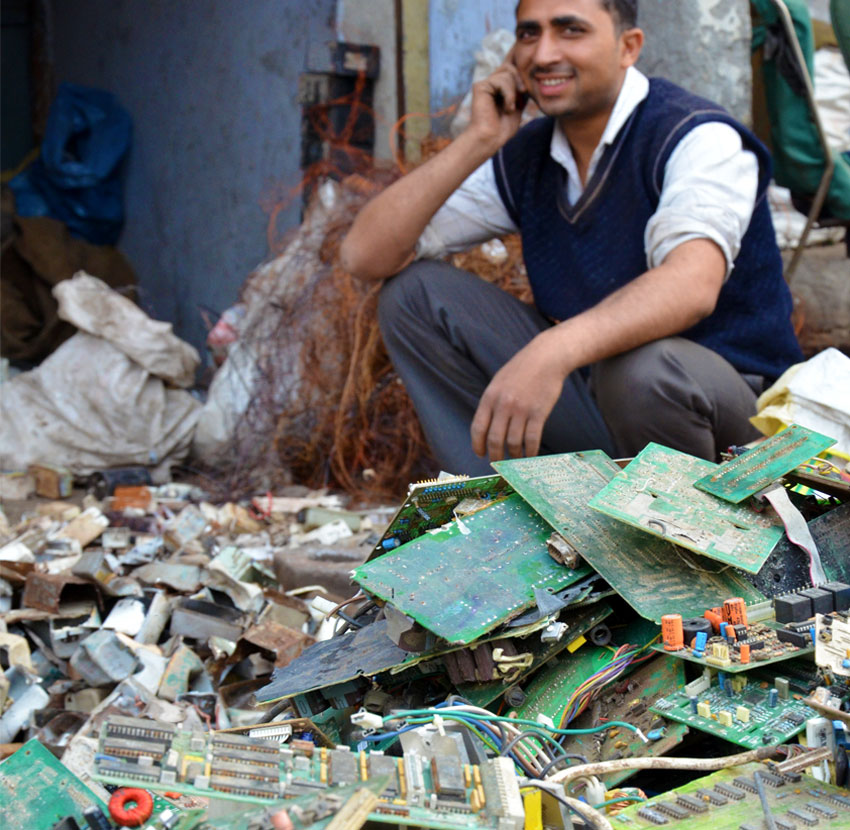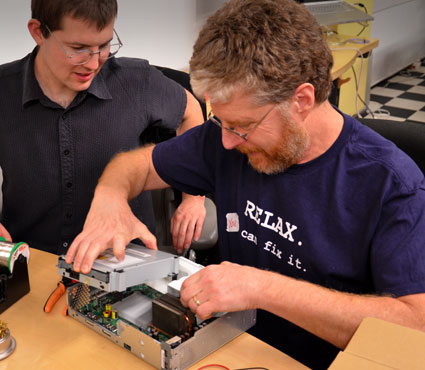Electronics Manufacturing Eats a Hole in the Earth Every Day
Mining materials for short-lived products has long-term consequences

81%
of the energy a laptop uses in its lifetime is consumed during manufacturing, not during use by consumers.

91 tons
Mining for the materials in electronics is incredibly destructive. Getting a single ounce of gold out of the earth can create up to 91 tons of waste.

1/3 of tin
in the world comes from informal mines in Bangka, Indonesia—mines so poorly run that a worker dies in a landslide almost once a week.

Half
the world’s supply of tantalum is sold to make electronics, like televisions and tablets—some of it funding civil wars in Africa.
Making our stuff requires an astounding amount of raw materials.
By weight, electronics require far more resources than any other product.
A 4.5 ounce iPhone requires 295 pounds of raw material (ore + water). Fueled by the demand for cool gadgets, iron ore production has increased by 126% , cobalt by 151%, and lithium by 172% within the last 10 years.
But we’re running out of stuff to mine.
Every year, manufacturers have to go deeper into the earth, producing more waste for less raw materials. Copper ore deposits are one-tenth the purity of the ore mined 100 years ago. Gold yields have declined 23% in the last six years.
We measure the cost of mining not in dollars, but in lives.

A California rare earth mine spilled 300,000 gallons of radioactive waste across the Mojave Desert, and rare earth mines continue to contaminate groundwater in Malaysia.

Both Samsung and Apple have confirmed that they use tin from deadly Indonesian tin mines, which sometimes collapse on miners.

Coltan is in almost every electronic and up to 80% of the world’s coltan reserves are in the war-torn Democratic Republic of Congo. Today, children as young as eight work in the mines.

In 2017, Toshiba was ranked as the worst consumer electronics company when it comes to conflict minerals monitoring.

Manufacturing costs us resources and energy.
Electronics come with baggage we can’t see. A 129 gram iPhone requires 1000 times the materials in weight to manufacture. (100 liters of water + 75 pounds of ore).
A desktop computer requires 530 pounds of fossil fuels to make.
Microchips are in everything—computers, cars, even refrigerators. But making those tiny chips costs more than you’d think. It takes about 70 pounds of water and hundreds of chemicals—including arsenic—to make a single microchip; your cell phone contains dozens of them.
Fabricating microchips has made Silicon Valley—the heart of the high tech industry—one of the most polluted areas in the United States.

Repair makes your products last longer.
Every cell phone repaired is one less that needs to be manufactured. Every laptop used for just one year longer lessens the strain on our finite resources. Every computer upgraded can go on to a second, third, or even a fourth user before it really needs to be replaced.
Buy repairable electronics whenever possible. Fix your phone and your computer when they wear out. Then keep using them, or give them away.
The greenest phone is the one that is already in your pocket.
Mining and manufacturing is destruction. Making products last longer just makes sense—repair and reuse are our future.
Learn More
What is repairable design?
Conflict minerals from our electronics are fueling wars in the Congo.
China dominates the rare earth mining supply, although one mine in California is trying to change that.
Take Action
Fix your electronics whenever possible. No need to buy a new one if most of the machine still works fine.
Research: Know which smartphones and tablets are repairable before you buy.